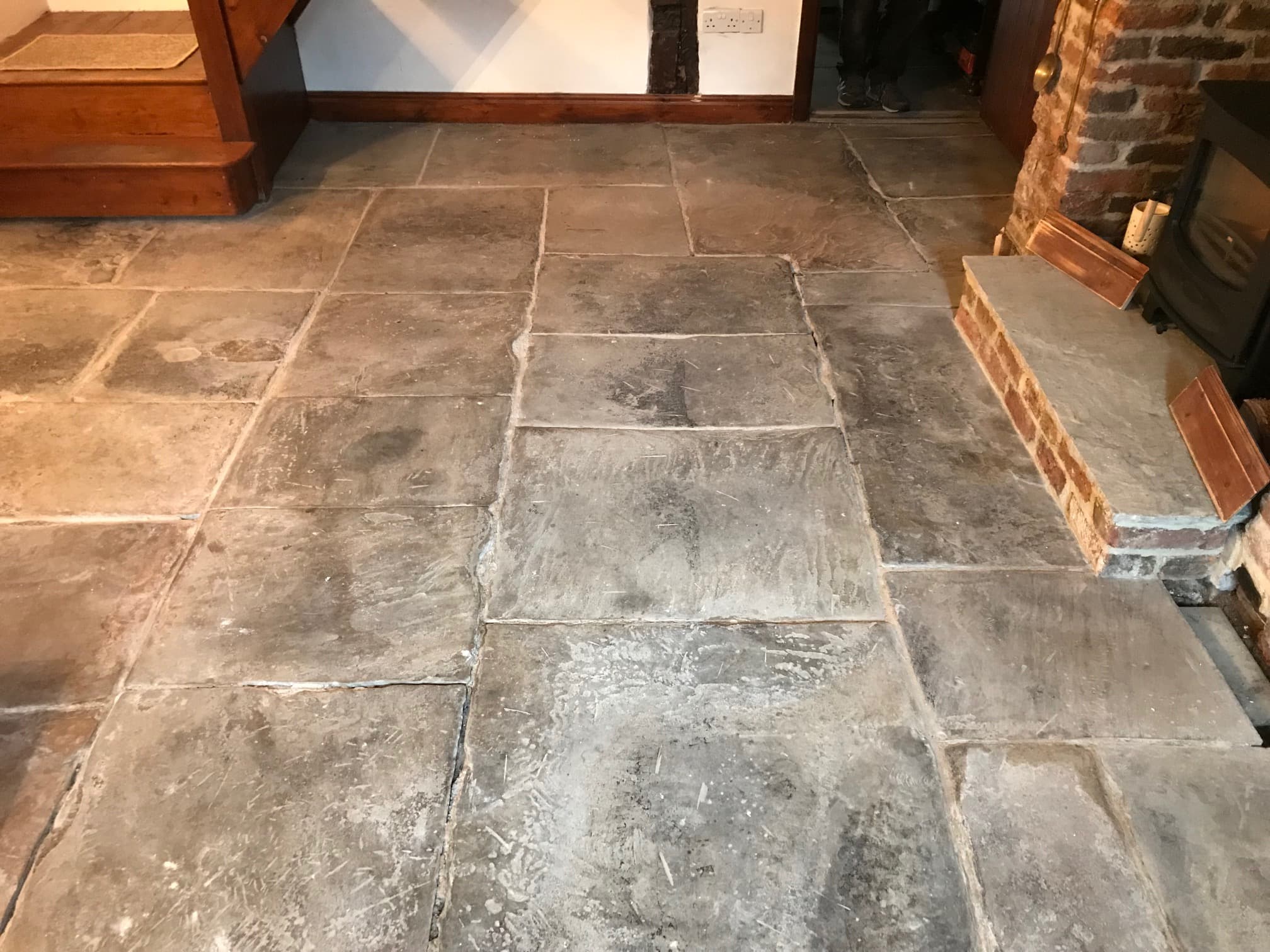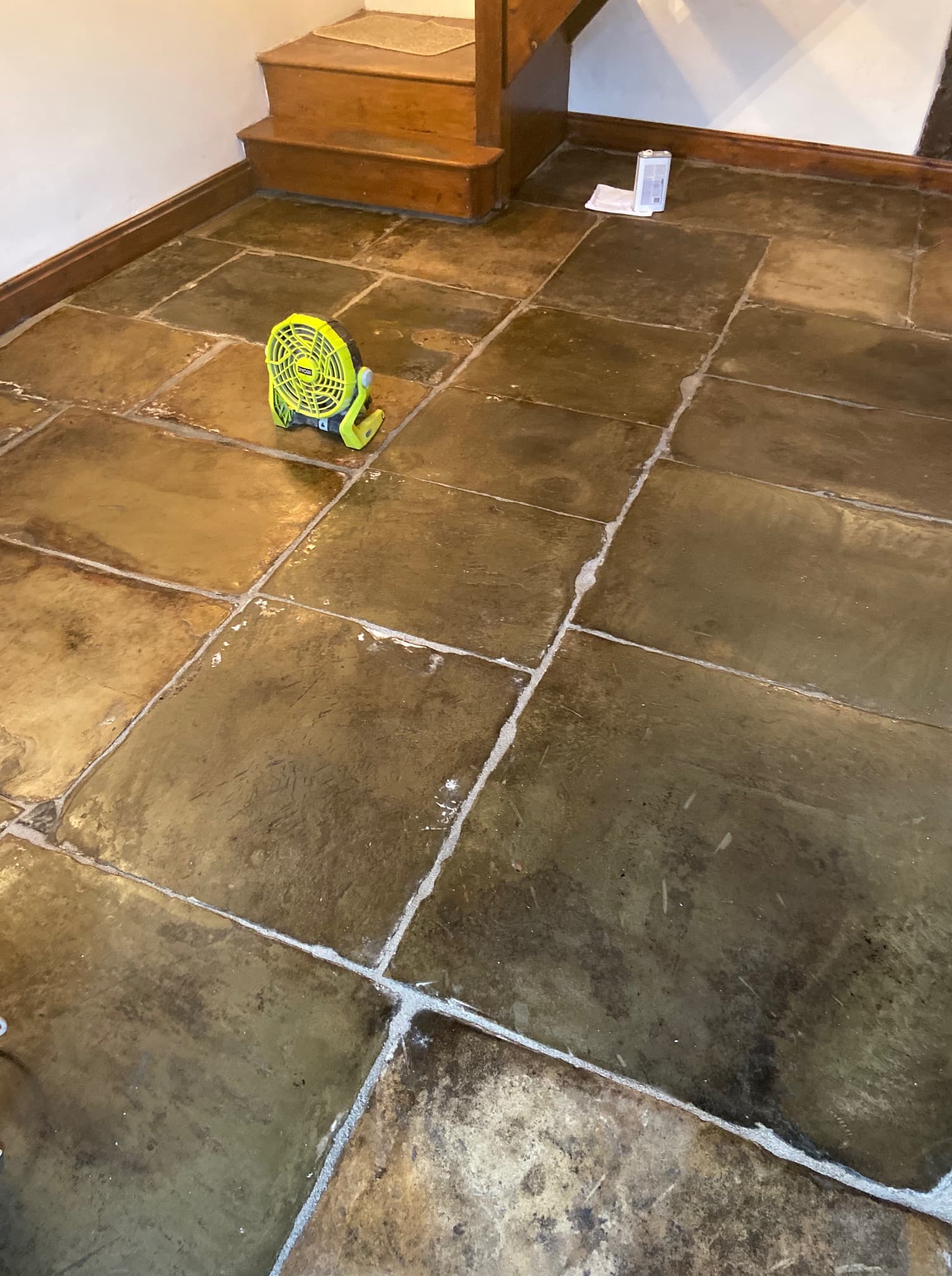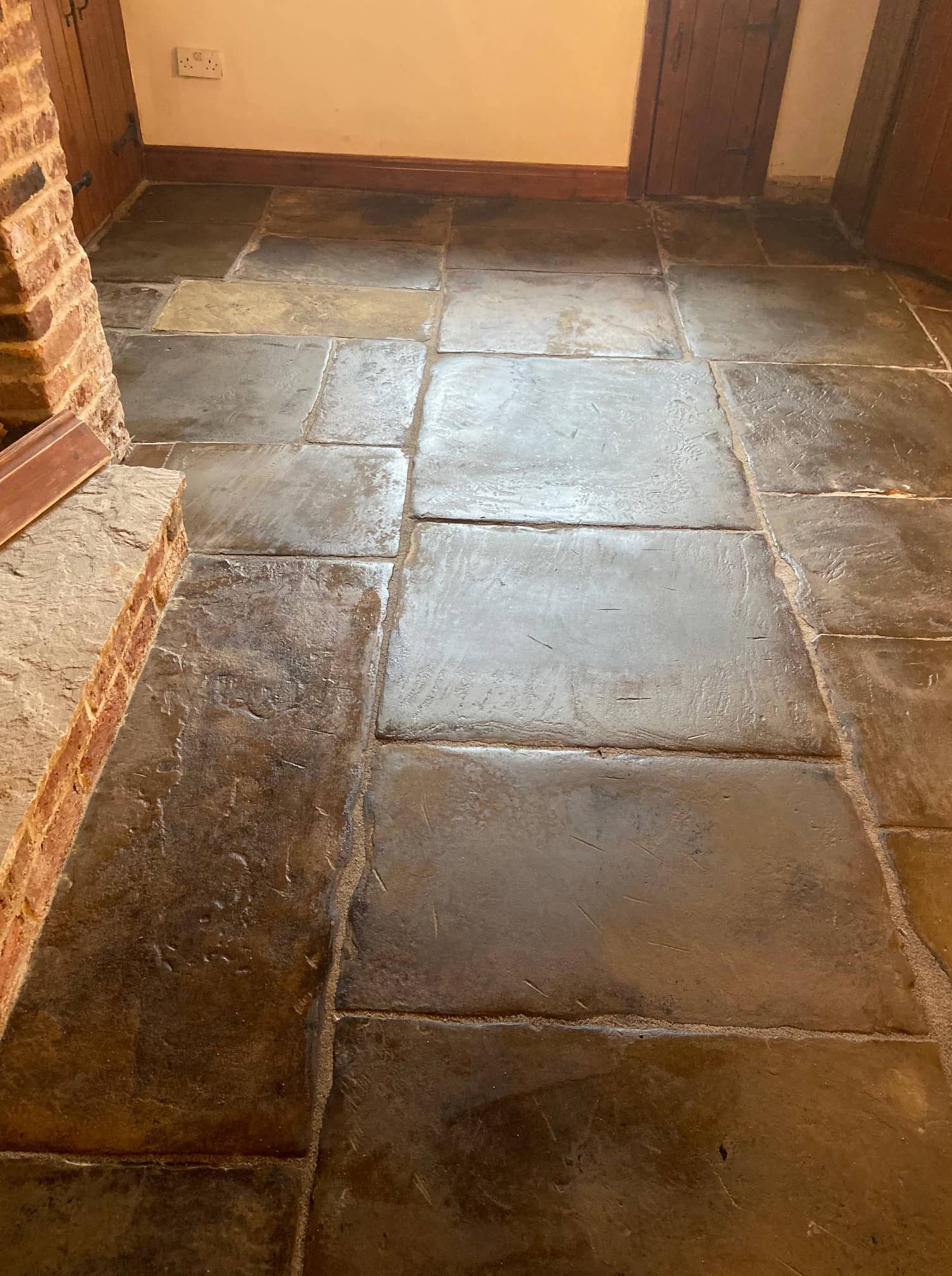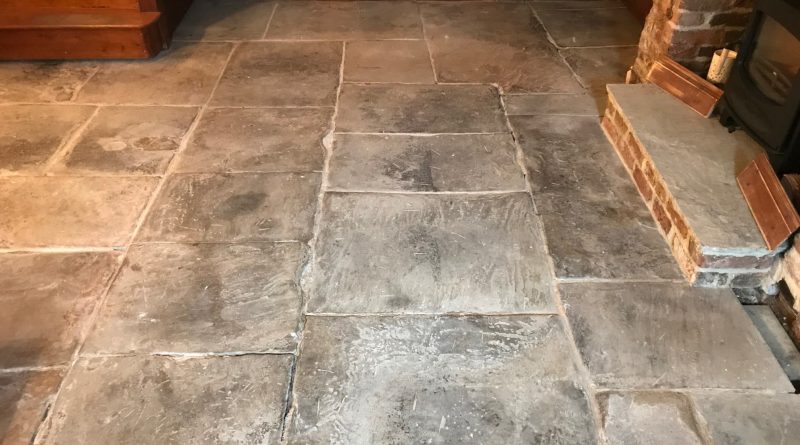Restoring Flood Damaged Flagstone Flooring in Lancashire
This Flagstone floor was under water in 2015 due to a flood that affected the beautiful village of Whalley resulting in many residents being evacuated from their homes. Four years later and the floor had settled in places and large chunks of Limecrete pointing had become loose. As you can imagine the floor hadn’t been the same since.
It took a while before the customer could get back into the house and the insurance assessor said that because this was an original floor and the building was grade 2 listed the flagstone floor had to stay in place. There is no guarantee from the local council that the house and adjacent streets won’t get flooded again in the future, but this type of floor is probably the most hardwearing for this situation so is best left in place. Wood flooring, carpet, vinyl etc will not stand up to another flood and would have to be replaced every time.
 |
 |
I was asked to come up with some solutions for renovating the flagstone floor and replacing the Limecrete pointing which was tricky as whatever replaced the Limecrete pointing needed to be fully breathable as did the sealer that went on the stone.
After some research we decided to use a German product called VDW 800 for the pointing instead of Limecrete. it’s designed to be fully breathable (permeable) and suitable for outside use such as patios and porches etc which made it ideal for a floor that may face flooding again. Its highly flexible, durable and comes in four colours. It can be cleaned via a pressure washer on a wide fan and it won’t loosen, so I was confident that if another flood hit the town all this floor would need was a clean down.
The client was very happy to hear this news and wanted us to go ahead as soon as possible and get the floor restored. With a restoration plan worked out we agreed a date for our return to complete the work.
Cleaning and Repointing a Flagstone Floor
On our return our first course of action was to clean the stone using a 100 and 200-grit milling pads which were run several times over each flagstone using water for lubrication. The resulting slurry was removed using a wet vacuum and the floor was then treated to an acid rinse using Tile Doctor Grout Clean-up. After a rinse with water and extraction with the wet vacuum the flagstones were given a final clean using a 400-grit diamond burnishing pad.
With the floor now clean we set about removing the old pointing using an 8lb pneumatic drill, whilst noisy it did make quick work of the task. After a another clean to remove the debris the floor was repointed using the VDW 800 product mentioned earlier. The floor was then left to dry overnight.
 |
 |
Sealing a Flagstone Tiled Floor in Lancashire
I came back the next day to review the previous days work and ensure I was happy with the state of the floor before applying a sealer. This is important as otherwise you risk sealing in dirt which would affect the appearance. It’s tricky to tell when a floor it wet and on this occasion I felt the stone would benefit from another clean so I cleaned the floor one last time using a black buffing pad and water. The water was then removed as before with a wet vacuum.
 |
 |
The floor was left to fully dry out for a further 24 hours and I called back one more time to review the floor and apply three coats of Tile Doctor Colour Grow which is a breathable sealer that also enhances the natural colours in the stone.
Once finished the floor looked great again and the clients were over the moon with the result. Fingers crossed there would be no further flooding in the future, however even if there was the new grout should stand up to it.
Source: Sandstone Flagstone Cleaning and Restoration Service in Lancashire
